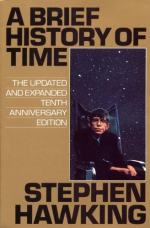|
This section contains 527 words (approx. 2 pages at 400 words per page) |

|
Chapter 2 Space and Time Summary and Analysis
Galileo and Newton change the Aristotelian approach to science. Galileo actually conducts experiments to test theory, while Aristotle believes everything can be determined through pure thought. Newton uses Galileo's measurements to work out his laws of motion. From these efforts come Newton's laws of how gravity works, and so humanity advances toward a better understanding of the universe.
Aristotle thinks that objects have absolute position within absolute space, but this turns out not to be true. Another of his concepts, shared by Newton, is that time is also absolute. These interpretations of the universe work in a commonsense way while dealing with everyday objects or very large objects like planets, but as objects approach the speed of light, the ideas fall apart.
Light travels at the speed of 186,000 miles per second. The speed of light...
(read more from the Chapter 2 Space and Time Summary)
|
This section contains 527 words (approx. 2 pages at 400 words per page) |

|




